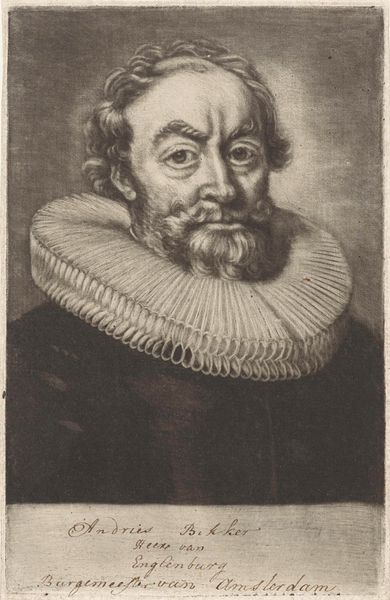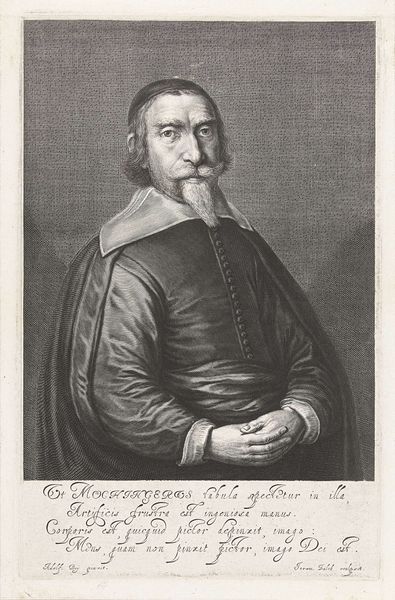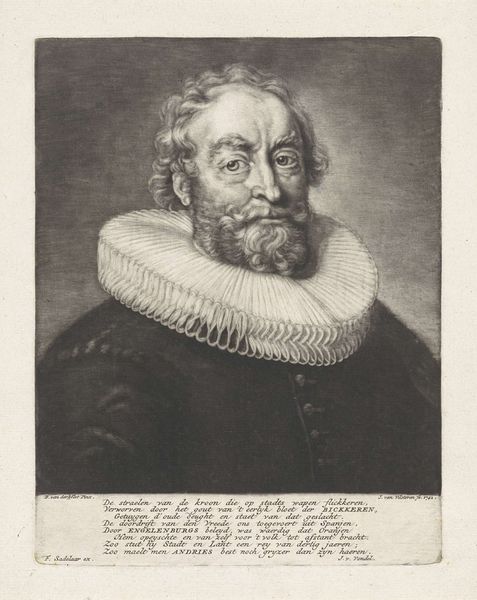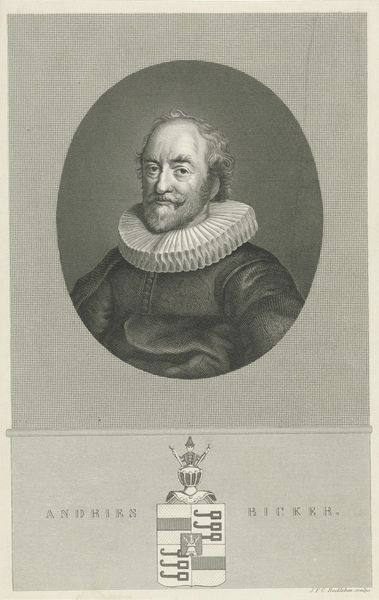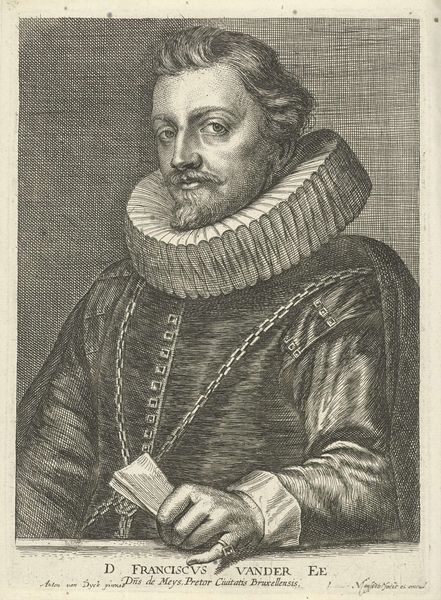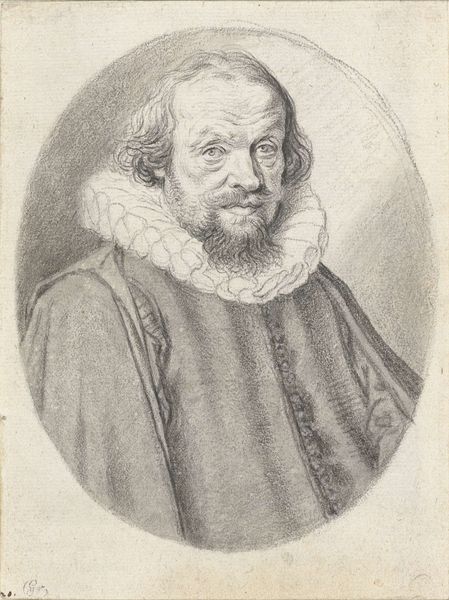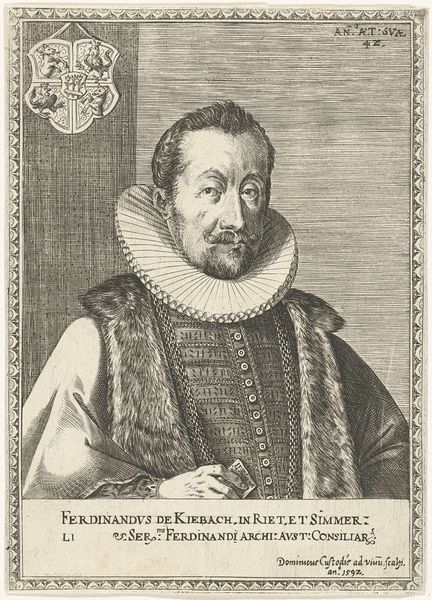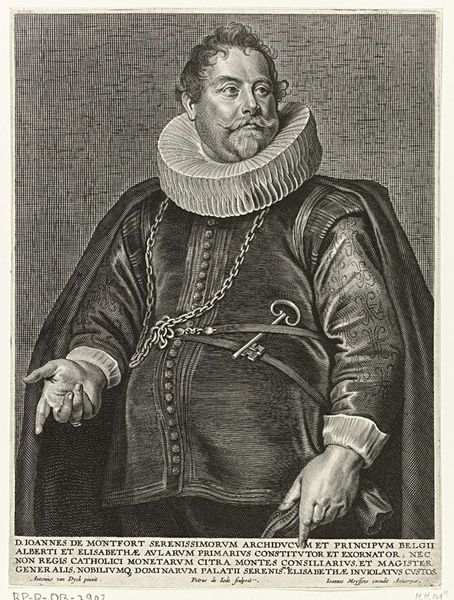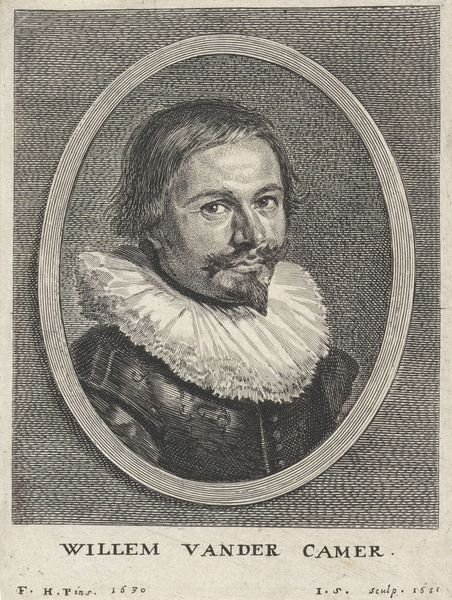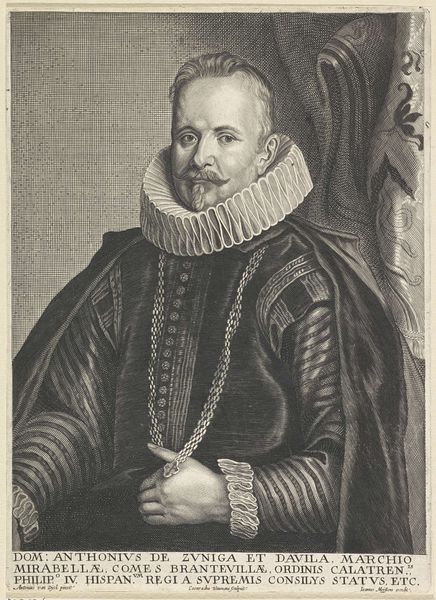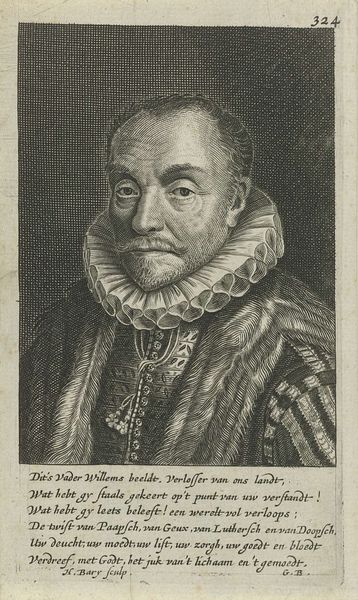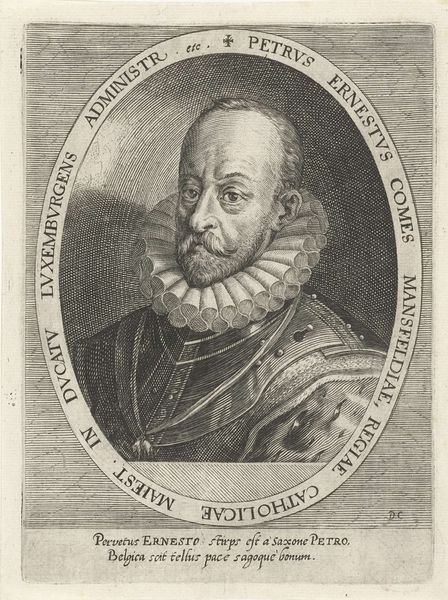
print, engraving
#
portrait
#
baroque
# print
#
old engraving style
#
portrait reference
#
limited contrast and shading
#
portrait drawing
#
history-painting
#
engraving
Dimensions: height 165 mm, width 107 mm
Copyright: Rijks Museum: Open Domain
Editor: This is a print titled "Portret van Andries Bicker" created by Johannes van Vilsteren in 1756. It's a compelling portrait, almost severe in its presentation. What strikes me most is how the contrast emphasizes the ruff collar and Bicker's face, drawing you immediately to his gaze. How do you interpret this work? Curator: The stark contrast you observe serves a vital compositional purpose. It is interesting how your attention is drawn specifically to the areas with highest tonal variation. Formally, the engraving demonstrates a keen understanding of line and texture. The hatching and cross-hatching techniques create a range of values, suggesting form and depth, although the tonal range is limited. Notice the geometry of the ruff against the flowing lines of his hair and beard. Do you find that contrast compelling, or perhaps unsettling? Editor: I find it compelling; it focuses my attention. So, you’re saying the limited tonal range is a stylistic choice, almost a constraint that the artist uses to emphasize the texture and line? Curator: Precisely. The constraint informs the visual experience. Look closely at how van Vilsteren uses very fine lines to depict the texture of the fabric in his jacket, versus the denser lines used to convey the shadows on his face. These structural relationships create a dynamic tension within the work. The inscription below the image becomes another formal element within the total design, don't you think? Editor: Yes, I do now that you mention it. It frames the piece. I’ve never considered text that way. This way of looking at art has broadened my perception of portraits. Curator: Indeed, through careful observation, we gain access to the artist’s visual decisions and, therefore, a greater understanding of the artwork itself.
Comments
No comments
Be the first to comment and join the conversation on the ultimate creative platform.
